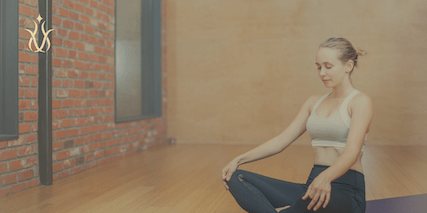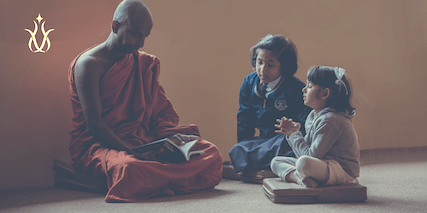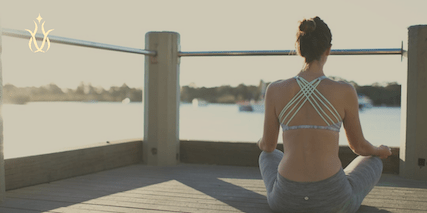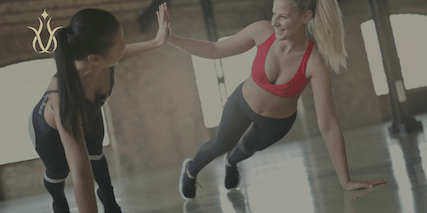Discover the world of meditation and find answers to your burning questions. Learn about the benefits, techniques, and tips for incorporating meditation into your daily life.
What is Meditation?
Meditation is a practice that involves training the mind to focus and redirect thoughts. It is a technique used to cultivate mental clarity, emotional well-being, and a sense of inner peace. Meditation is found in various forms and has been practised for thousands of years in different cultures and spiritual traditions.
At its core, meditation involves the intentional and disciplined effort to achieve a state of heightened awareness and attention. It often involves focusing the mind on a particular object, such as the breath, a mantra, or a visual image. The aim is to develop a calm and concentrated state of mind, free from the distractions of everyday thoughts and external stimuli.
Meditation is not about stopping or suppressing thoughts but rather observing them without judgment and letting them pass by. It helps to develop mindfulness, which is the ability to be fully present and aware of the present moment. Through regular practice, meditation can enhance self-awareness, reduce stress, improve concentration, promote emotional well-being, and cultivate a deeper sense of inner peace and contentment.
It’s important to note that meditation is a personal practice, and there are many different approaches and techniques available. Some common types of meditation include mindfulness meditation, loving-kindness meditation, transcendental meditation, and guided meditation. Each technique has its own unique focus and benefits.
To start a meditation practice, find a quiet and comfortable space, assume a comfortable posture, and begin with a few minutes of focused attention on your breath or another chosen object of focus. With time and consistent practice, you can gradually increase the duration and explore different meditation techniques to find what resonates best with you.
It’s worth mentioning that meditation is not a quick fix or a one-size-fits-all solution. Like any skill, it takes time, patience, and regular practice to experience its benefits. Learning from experienced teachers, joining mindfulness meditation classes or groups, or using meditation apps that offer guided meditation instructions to support your practice and deepen your understanding of meditation is recommended.

What are The Benefits of Meditation?
Meditation offers numerous benefits for both the mind and body.
Here are some of the key benefits of regular meditation practice:
Stress reduction:
Meditation helps to reduce stress levels by promoting relaxation and calming the mind. It activates the body’s relaxation response, which counteracts the physiological effects of stress.
Improved focus and concentration:
Regular meditation practice enhances focus, attention, and concentration. It helps to train the mind to stay present and resist distractions, leading to increased productivity and mental clarity.
Emotional well-being:
Meditation can improve emotional well-being by reducing symptoms of anxiety, depression, and emotional distress. It cultivates mindfulness and self-awareness, allowing individuals to observe and manage their emotions more effectively.
Enhanced self-awareness:
Through meditation, you develop a deeper understanding of yourself, your thoughts, and your emotions. This increased self-awareness can lead to personal growth, improved decision-making, and greater self-acceptance.
Better sleep:
Meditation can help improve the quality of sleep by promoting relaxation, reducing stress and anxiety, and calming the mind. It can also be useful for managing insomnia and other sleep-related disorders.
Increased resilience:
Regular meditation practice strengthens resilience, enabling individuals to cope better with life’s challenges, setbacks, and stressors. It helps to develop a sense of inner calm, balance, and adaptability.
Physical health benefits:
Meditation has been associated with several physical health benefits, including reduced blood pressure, improved immune function, and reduced inflammation. It may also support heart health, pain management, and overall well-being.
Greater mindfulness:
Mindfulness is a key component of meditation practice. It involves being fully present in the moment and non-judgmentally observing thoughts and sensations. Cultivating mindfulness through meditation can enhance daily life experiences, relationships, and overall mindfulness in everyday activities.
It’s important to note that the benefits of meditation can vary among individuals, and regular practice is key to experiencing long-term effects. It’s recommended to start with short meditation sessions and gradually increase the duration as you build your practice.
What are the Different Types of Meditation?
Meditation comes in many forms, each with unique practices, techniques, and benefits.
Here are some common types of meditation:
Mindfulness Meditation:
This technique focuses on staying present. Practitioners are taught to stay in the moment by focusing on their breath, sensations in their body, or thoughts and emotions that come and go. This technique originates from Buddhist teachings.
Spiritual Meditation:
This type of meditation is used in many religious practices, including Hinduism, Daoism, and Christianity. It often involves reflection on the silence around you and seeking a deeper connection with your God or Universe.
Focused Meditation:
In this form, you concentrate using any of your five senses. This could be focusing on something internal, like your breath, or on external influences, such as the burning flame of a candle or the sound of a gong.
Movement Meditation:
This practice includes mindful walking, gardening, tai chi, and other gentle forms of exercise. It’s an active form of meditation where the movement guides you. Yoga is a notable form of movement meditation.
Mantra Meditation:
This form of meditation style uses a repetitive sound, a word or a phrase to clear the mind. It can be a word like “Om”, “peace”, or “love,” or a phrase or prayer. The idea is to repeat the mantra continuously until one transcends beyond one’s mind and emotions.
Transcendental Meditation:
A more specific form of mantra meditation where practitioners remain seated and breathe slowly while repeating a personal mantra given to them by a certified Transcendental Meditation teacher. The aim is to rise above one’s current state of being.
Loving-Kindness Meditation:
Also known as Metta meditation, the goal is to develop an attitude of love and kindness towards everything, even a person’s enemies and sources of stress. Practitioners open their minds to receiving love from others and then send a series of good wishes to loved ones, family, friends, acquaintances, and all living beings.
Progressive Relaxation:
Also known as body scan meditation, it involves slowly tightening and then relaxing one muscle group at a time throughout the body. It’s used to promote relaxation and alleviate tension.
How does Meditation Change the Brain?
Meditation has been shown to produce changes in the brain that can have long-lasting effects on its structure and function.
Here are some ways in which the various forms of meditation can influence the brain:
Increased grey matter: Studies have found that regular meditation is associated with an increase in grey matter volume in various regions of the brain. These regions include the prefrontal cortex, which is involved in decision-making and self-regulation, and the hippocampus, which plays a role in memory and learning.
Improved connectivity: Meditation can enhance the connectivity between different regions of the brain, promoting better communication and coordination. This increased connectivity has been observed in networks related to attention, emotion regulation, and self-awareness.
Thicker prefrontal cortex: Long-term meditators have been found to have a thicker prefrontal cortex, particularly in areas associated with attention and sensory processing. A thicker prefrontal cortex is linked to better cognitive abilities, emotional regulation, and decision-making.
Reduced activity in the default mode network: The default mode network (DMN) is a network of brain regions that are active during mind-wandering and self-referential thoughts. Meditation can reduce the activity and connectivity within the DMN, leading to a quieter mind and less rumination.
Enhanced emotional regulation: Meditation has been shown to influence the amygdala, a brain structure involved in processing emotions. Regular practice can reduce the reactivity of the amygdala, allowing for better emotional regulation and a greater sense of calm.
Increased cortical thickness: Certain areas of the brain, such as the insula and the somatosensory cortex, may show increased cortical thickness with meditation practice. These changes may be associated with heightened body awareness and sensory perception.
Neuroplasticity: Meditation can promote neuroplasticity, the brain’s ability to reorganise and adapt. It can strengthen existing neural connections and create new ones, allowing for more flexible thinking and improved learning and memory.
It’s important to note that the specific changes in the brain can vary depending on the type of meditation practised, the duration and intensity of practice, and individual differences. Regular and sustained meditation practice over an extended period is typically associated with more pronounced brain changes.

How Do I Meditate?
Meditation involves focusing one’s attention while eliminating any stream of thoughts to achieve a state of calmness and mental clarity.
Here are some steps to help you get started with meditation:
Find a quiet and comfortable space: Choose a peaceful environment where you can sit comfortably without distractions. It could be a quiet room in your home or a serene outdoor setting.
Assume a comfortable posture: Sit in a position that allows you to be relaxed yet alert. You can sit on a cushion or a chair with your back straight and your hands resting on your thighs.
Close your eyes or soften your gaze: Close your eyes gently or lower your gaze to a fixed point in front of you. This helps minimise visual distractions and allows you to turn your focus inward.
Focus on your breath: Bring your attention to your breath. Notice the sensation of each inhalation and exhalation. Observe the natural rhythm and flow of your breath without trying to control it.
Be present in the moment: As thoughts, emotions, or sensations arise, acknowledge them without judgment and gently bring your attention back to your breath. Allow your thoughts to come and go, returning your focus to the present moment.
Start with short sessions: If you’re new to meditation, start with shorter sessions, such as 5-10 minutes, and gradually increase the duration as you become more comfortable.
Explore different meditation techniques: There are various meditation techniques you can try, such as focused attention on a specific object or mantra, loving-kindness meditation, body scan meditation, or mindfulness meditation. Experiment with different approaches to find what resonates with you.
Practice regularly: Consistency is key. Aim to incorporate meditation into your daily routine, even if it’s just for a few minutes. Over time, regular practice will help you develop greater mindfulness, focus, and inner peace.
Remember, meditation is a personal practice, and there’s no right or wrong way to meditate. Find a style and approach that works best for you. It’s also helpful to seek guidance from experienced meditation teachers or use meditation apps that offer guided sessions to support your practice.
How Do I practice Mindfulness Meditation?
Practising mindfulness meditation involves cultivating a state of non-judgmental awareness of the present moment.
Here’s a step-by-step guide to help you practice mindfulness meditation:
Find a quiet and comfortable space: Choose a calm and quiet environment where you can sit comfortably. It can be a dedicated meditation space or any place where you feel relaxed and undisturbed.
Assume a comfortable posture: Sit in a position that allows you to be both alert and relaxed. You can sit on a cushion or a chair with your back straight, shoulders relaxed, and hands resting on your thighs.
Settle into the present moment: Close your eyes gently or maintain a soft gaze. Take a few deep breaths to bring your attention to the present moment, and let go of any tension or distractions.
Focus on your breath: Direct your attention to the sensation of your breath. Notice the natural rhythm of your breath—whether it’s flowing in and out through your nose, chest, or abdomen. Pay attention to the full cycle of each breath.
Cultivate non-judgmental awareness: As you observe your breath, thoughts, emotions, and sensations may arise. Rather than getting caught up in them or judging them, simply acknowledge their presence and let them go. Return your focus to the sensation of the breath whenever your mind wanders.
Expand your awareness: As you continue to focus on your breath, gradually broaden your awareness to include your bodily sensations, sounds in the environment, and any other sensory experiences. Be fully present with whatever arises in the present moment.
Practice acceptance and compassion: Approach your experience with kindness, acceptance, and nonjudgment. If your mind wanders or gets caught up in thoughts, gently bring your attention back to the breath and the present moment without self-criticism.
Continue for a set period of time: Start with shorter sessions, such as 5-10 minutes, and gradually increase the duration as you become more comfortable. Consistency is more important than duration, so aim for regular practice.
Integrate mindfulness into daily life: The benefits of mindfulness extend beyond formal meditation sessions. Try to bring mindful awareness into your daily activities, such as eating, walking, or interacting with others. Cultivate a sense of presence and non-judgment in all aspects of your life.

What Should I Think About When I Meditate?
When you meditate, your goal is to quiet the mind and cultivate a state of focused awareness or mindfulness. Rather than actively thinking about specific topics or engaging in mental chatter, you intend to observe your thoughts without getting caught up in them.
Here are some suggestions on what to focus on during meditation:
Breath: Pay attention to your breath as it naturally flows in and out. Focus on the sensation of the breath entering and leaving your body, the rise and fall of your abdomen or chest, or the feeling of air passing through your nostrils. This helps anchor your attention in the present moment.
Sensations in the body: Bring awareness to the physical sensations in your body. Scan through different body parts, starting from the top of your head down to your toes, and notice any sensations or areas of tension. Simply observe the sensations without judgment or the need to change them.
Sounds: Notice the sounds around you without getting caught up in them. Observe the sounds as they arise and fade away, maintaining a nonreactive and nonjudgmental attitude toward them.
Emotions: Acknowledge any emotions that arise during meditation. Allow yourself to observe them without becoming entangled in the stories or judgments associated with those emotions. Practice accepting emotions with kindness and compassion.
Emptying the mind: Instead of actively thinking, aim to create a sense of spaciousness and stillness within your mind. Allow thoughts to arise and pass by without attaching to them or following their train of thought. Imagine your thoughts as clouds drift across the sky, gently letting them go as they pass.
Remember that the specific focus of your meditation can vary depending on the technique or tradition you follow. Some practices may involve visualisation, mantra repetition, or loving-kindness meditation, among others. Experiment with different approaches and find what resonates with you. It’s normal for the mind to wander during meditation, so gently guide it back to your chosen point of focus whenever you notice your attention has drifted.
How Can I Learn to Meditate Properly?
Learning to meditate properly involves understanding the basic principles and techniques of meditation and establishing a consistent practice.
Here are some steps to help you learn and cultivate a proper meditation practice:
Educate Yourself: Read books, articles, or reliable online resources about meditation. Familiarise yourself with different meditation techniques, philosophies, and benefits. This knowledge will provide a foundation for your practice.
Start with Guided Meditations: Guided meditations are a great way to begin your meditation journey. They provide meditation instructions and support in the form of audio recordings or apps that guide you through the meditation process. Look for reputable meditation apps or guided meditation resources to get started.
Choose a Comfortable Environment: Find a quiet and peaceful space where you can meditate without distractions. It could be a dedicated meditation corner in your home or any place where you feel calm and at ease.
Set a Regular Schedule: Consistency is key in meditation. Set aside a specific time each day for your practice. Start with shorter sessions, such as 5 or 10 minutes, and gradually increase the duration as you become more comfortable.
Adopt a Comfortable Posture: Sit in a comfortable position that allows you to be relaxed yet alert. You can sit cross-legged on a cushion, on a chair with your feet flat on the ground, or even lie down if that works best for you. Maintain an upright posture with a relaxed and open body.
Focus on Your Breath: As a beginner, focusing on the breath is a common and effective meditation technique. Pay attention to the sensation of your breath as it enters and leaves your body. Whenever your mind wanders, gently bring your attention back to the breath.
Be Gentle with Yourself: It’s normal for thoughts to arise during meditation. Instead of becoming frustrated or judgmental, simply observe the thoughts without getting attached to them. Allow them to come and go, returning your focus to the present moment.
Seek Guidance: Consider attending meditation classes or workshops led by experienced teachers. They can provide guidance, answer questions, and offer personalised instructions to deepen your practice. Online resources, meditation apps, and community groups can also be valuable sources of support.
Practice Patience and Persistence: Meditation is a skill that develops over time. Be patient with yourself and understand that your mind may wander or you may encounter challenges along the way. With consistent practice, you will gradually experience the benefits and deepen your meditation practice.
Remember, there is no “perfect” way to meditate, and what works for one person may not work for another. Explore different techniques, trust your intuition, and find a meditation style that resonates with you. The key is to approach your practice with an open mind, kindness towards yourself, and a willingness to learn and grow.
Does Meditation Help with Anxiety?
Yes, meditation can be beneficial for managing and reducing anxiety. Numerous studies have shown the positive effects of meditation on anxiety symptoms and overall well-being.
Here’s how meditation can help with anxiety:
Calms the mind: Meditation helps calm the mind by shifting the focus away from anxious thoughts and worries. By training your mind to stay present in the moment, meditation reduces rumination and promotes a sense of calmness and clarity.
Reduces stress response: Regular meditation practice has been found to reduce the body’s physiological response to stress. It activates the relaxation response, which counteracts the fight-or-flight response associated with anxiety. This can result in a decreased heart rate, lowered blood pressure, and reduced levels of stress hormones.
Enhances self-awareness: Through meditation, you develop a greater sense of self-awareness, which allows you to recognise and observe your anxious thoughts and emotions without judgment. This awareness gives you the opportunity to respond to anxiety in a more balanced and compassionate way.
Cultivates mindfulness: Mindfulness meditation, in particular, teaches you to focus on the present moment without judgment. It helps you become more aware of your thoughts and feelings as they arise, allowing you to disengage from automatic patterns of anxious thinking and respond with greater clarity and equanimity.
Promotes relaxation and emotional well-being: Regular meditation practice can lead to a greater overall sense of relaxation, calmness, and emotional well-being. It can help reduce symptoms of anxiety, such as restlessness, irritability, and tension.
It’s important to note that while meditation can be a helpful tool for managing anxiety, it is not a substitute for professional treatment. If you have severe or persistent anxiety symptoms, it’s recommended to seek support from a healthcare professional or a mental health practitioner. They can provide a comprehensive assessment and guide you in developing a personalised approach to manage your anxiety.

Is Yoga Meditation?
While yoga and meditation are closely related practices, they are not the same. Yoga is a holistic discipline that encompasses physical postures (asanas), breathing exercises (pranayama), and meditation. It is a multifaceted practice that combines movement, breath control, and mindfulness.
Conversely, meditation is a specific technique or practice that involves focusing the mind and cultivating awareness. It is often done in a seated position, but it can also be practised while walking, standing, or even during everyday activities. Meditation aims to train the mind, increase mindfulness, and promote a sense of calm and clarity.
Yoga incorporates meditation as one of its core components. In a yoga practice, meditation can be integrated at different stages, such as during or after the physical postures, as a separate practice, or as part of relaxation and final relaxation (savasana) at the end of a yoga session. Yoga prepares the body and mind for meditation by creating a state of balance, stability, and focus.
So, while yoga includes meditation, it is not solely limited to it. Yoga encompasses a broader range of practices and principles, including physical movement, breath control, ethical guidelines, and meditation.
What is Guided Meditation?
Guided meditation is a type of meditation in which a teacher, instructor, or recorded audio guides an individual through the meditation process. It involves following verbal instructions that direct your attention and guide your thoughts, emotions, and body sensations during the meditation session.
During guided meditation, you typically listen to a soothing voice that provides step-by-step guidance on what to focus on and how to navigate your inner experiences. The guidance may include instructions to relax, breathe deeply, visualise certain images or scenarios, cultivate specific emotions, or bring awareness to different parts of the body.
The purpose of guided meditation is to help you deepen your meditation practice and experience its benefits more fully. It can be particularly helpful for beginners or individuals who find it challenging to meditate on their own, as the guidance provides structure and support.
Guided meditation can be practised in various settings, including meditation classes, meditation apps, online platforms, or through audio recordings. It offers a convenient and accessible way to engage in meditation, regardless of your level of experience or the time and space available to you.
By following the instructions provided in guided meditation, you can cultivate mindfulness, relaxation, self-awareness, and inner calm. It can help reduce stress, promote mental clarity, enhance focus, and improve overall well-being. Additionally, guided meditation can address specific intentions or goals, such as promoting better sleep, reducing anxiety, or cultivating self-compassion.
Finding guided meditations from reputable sources and teachers who align with your needs and preferences is important. Experiment with different styles and voices to find the guidance that resonates with you and supports your meditation journey.
What are The Best Online Meditation Courses?
There are several reputable online meditation courses available that cater to different levels of experience and specific meditation techniques.
Here are some highly regarded online meditation courses:
Mindfulness-Based Stress Reduction (MBSR) by Jon Kabat-Zinn: MBSR is a well-known and evidence-based program that introduces mindfulness meditation and its practical applications. You can find online versions of the courses offered by various organisations.
The Science of Mindfulness by the University of Massachusetts: This online course provides a comprehensive introduction to mindfulness meditation and explores the scientific research supporting its benefits. It is taught by renowned mindfulness teachers and researchers.
Insight Meditation Online by Insight Meditation Society: Insight Meditation Society offers an online course that teaches insight meditation, also known as Vipassana. This course focuses on cultivating awareness and wisdom through meditation practice.
10% Happier by Dan Harris: 10% Happier is an online meditation course designed for beginners and those looking for a practical approach. It includes guided meditations, video lessons, and expert guidance.
The Mindful Movement: The Mindful Movement offers a variety of online meditation courses and programs, including mindfulness meditation, loving-kindness meditation, and stress reduction techniques. Their courses are suitable for beginners and experienced practitioners alike.
Ziva Meditation by Emily Fletcher: Ziva Meditation offers an online course that combines mindfulness, meditation, and manifesting. It aims to help individuals reduce stress and improve performance in all areas of life.
When choosing an online meditation course, consider factors such as the course content, instructor qualifications, user reviews, and any specific meditation techniques or styles you are interested in exploring. It’s also helpful to assess your level of experience and goals to find a course that aligns with your needs.
What are the Best Meditation Apps?
Several excellent meditation apps offer guided meditations, mindfulness exercises, and other helpful features.
Here are some of the best meditation apps:
Headspace: Headspace offers a wide range of guided meditations, mindfulness exercises, and sleep sounds. It is suitable for beginners and offers programs for different goals, including stress reduction, better sleep, and improved focus.
Calm: Calm is a popular meditation app known for its soothing guided meditations, relaxing music, and nature sounds. It also features programs for sleep, stress relief, and mindfulness.
Insight Timer: Insight Timer is a free meditation app with a vast library of guided meditations, music tracks, and talks from renowned meditation teachers. It also includes a meditation timer for self-guided practice.
10% Happier: ABC News anchor Dan Harris created 10% Happier, an app that offers guided meditations and practical teachings from leading meditation teachers. The app focuses on making meditation accessible and relatable for beginners.
Buddhify: Buddhify is a meditation app designed for modern lifestyles. It provides guided meditations for different activities and situations, such as commuting, working, and falling asleep. It aims to integrate mindfulness into daily life.
Simple Habit: Simple Habit offers short guided meditations for busy individuals. The app features meditations for various situations, including stress, anxiety, sleep, and productivity. It also includes programs led by experts in the field.
When choosing a meditation app, consider factors such as the variety of content, user interface, user reviews, and any specific features or programs that align with your needs and preferences. Many of these apps offer free trials or basic versions with the option to upgrade to a premium subscription for access to additional content and features.
Resources:
Saeed SA et al (2019). Depression and Anxiety Disorders: Benefits of Exercise, Yoga, and Meditation. Available at: https://www.aafp.org/pubs/afp/issues/2019/0515/p620.html
Goyal M et al (2014). Meditation programs for psychological stress and well-being: a systematic review and meta-analysis. Available at: https://jamanetwork.com/journals/jamainternalmedicine/fullarticle/1809754
Tseng AA (2022). Scientific Evidence of Health Benefits by Practicing Mantra Meditation: Narrative Review. Available at: https://www.ncbi.nlm.nih.gov/pmc/articles/PMC9623891/
MedicalNewsToday (2022). What is the best type of meditation? Available at: https://www.medicalnewstoday.com/articles/320392
Mayo Clinic (2022). Meditation: A simple, fast way to reduce stress. Available at: https://www.mayoclinic.org/tests-procedures
Everyday Health (2023). Meditation 101: A Scientific Guide on How to Meditate for Stress Reduction and More. Available at: https://www.everydayhealth.com
Disclaimer: This article is for informational purposes only and should not replace professional medical advice. If you have specific concerns or medical conditions, it is recommended to consult with a healthcare professional for personalised guidance and support.
Related Topics:
Wellness Escapes: The Best Luxury Wellness Retreats in the World
5 Reasons Why a Yoga Retreat Should Be Your Next Vacation






